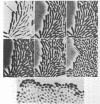Abstract
Hoffman, Heiner (New York University, New York), and Michael E. Frank. Time-lapse photomicrography of the formation of a free spherical granule in an Escherichia coli cell end. J. Bacteriol. 86:1075–1078. 1963.—Only a single case of the formation of a free spherical granule at an Escherichia coli cell end was found among several thousand cells recorded by time-lapse photomicrography. The spherical end body apparently arose immediately upon or soon after binary fission, at the newly formed cell end. Several minutes elapsed between the appearance of the end body and its full separation, apparently by constriction, from the mother cell. The end body showed no cytological changes during a 51-min period of observation after its separation from the mother cell. A hypothesis concerning the nature of end bodies and the mechanisms underlying their production is presented.
Full text
PDF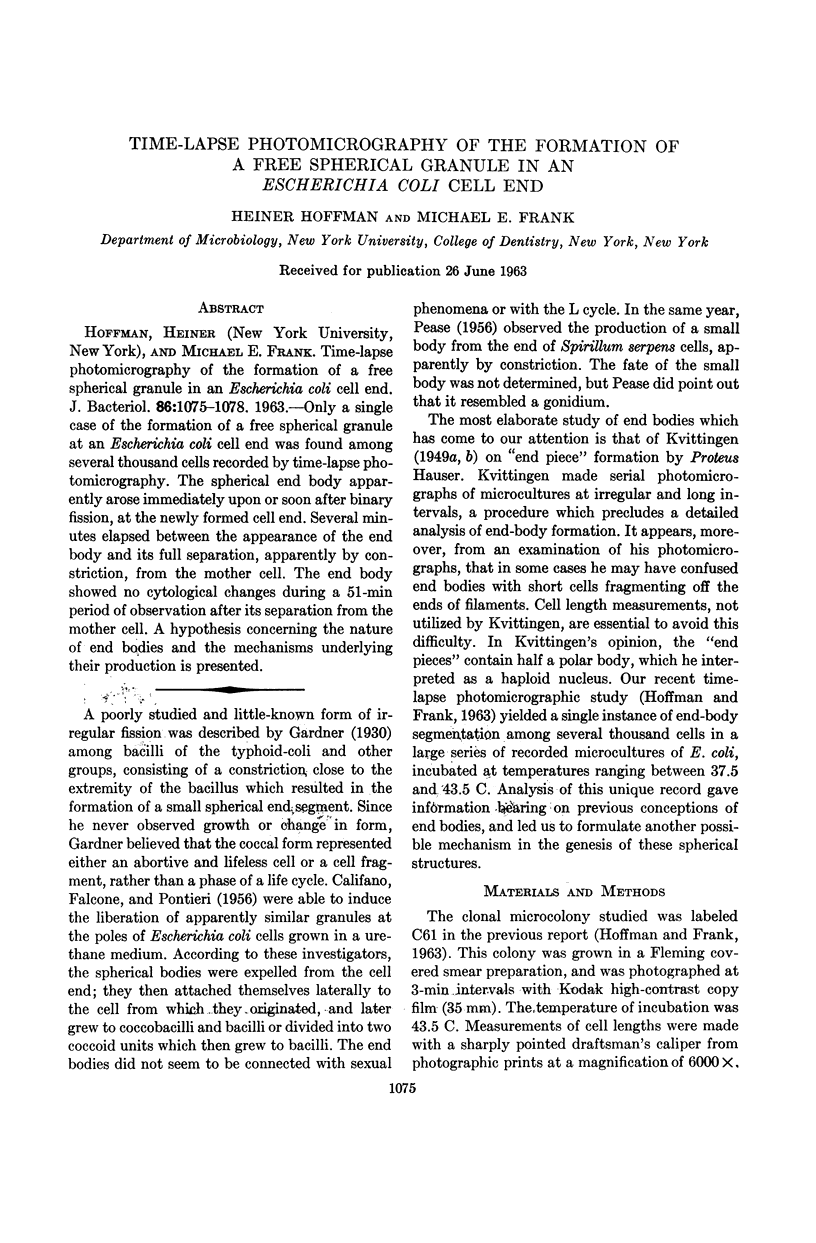
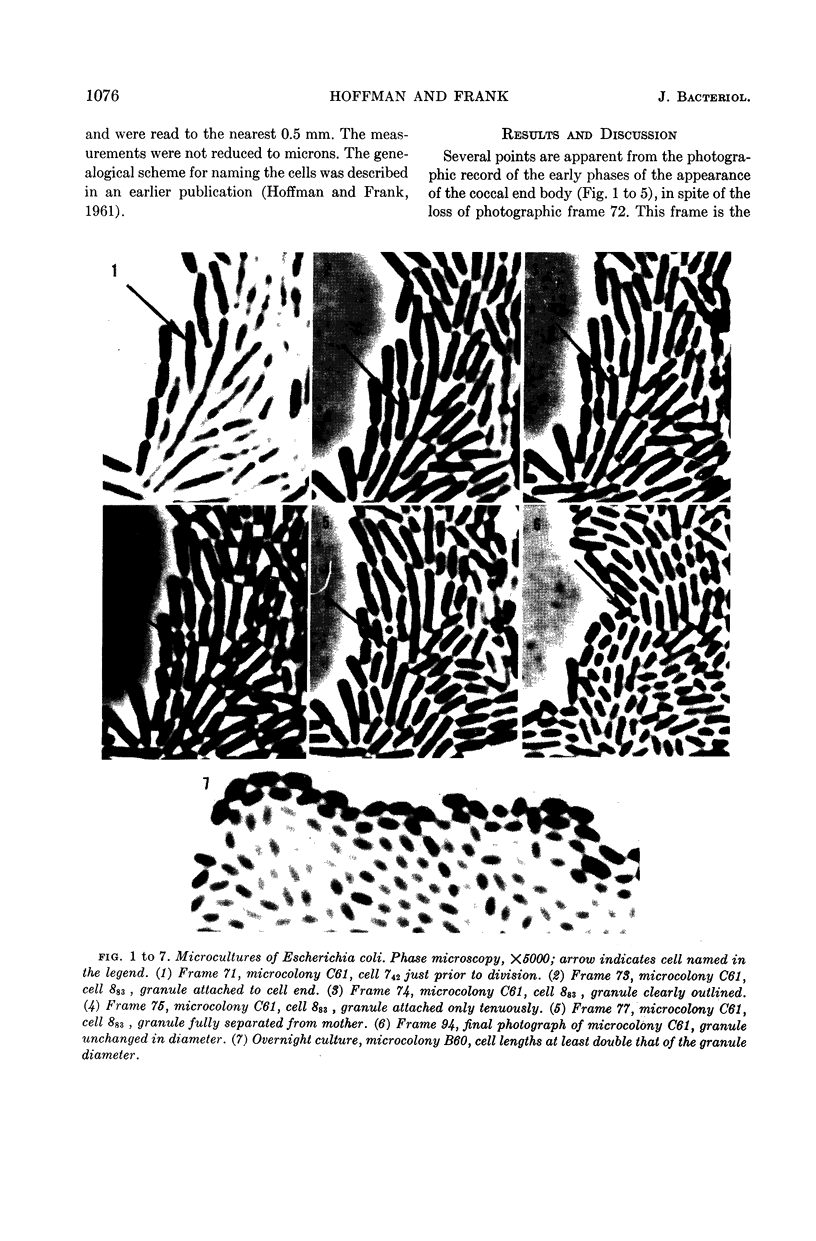
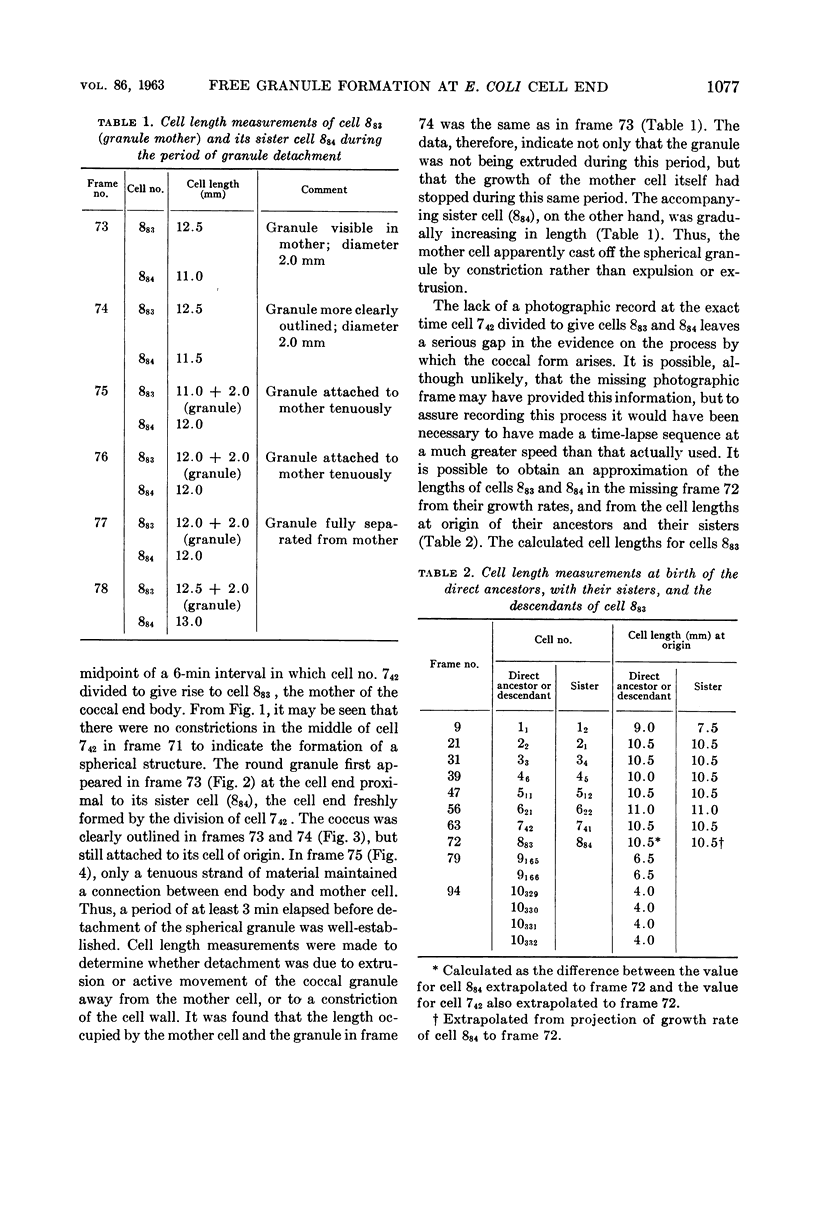
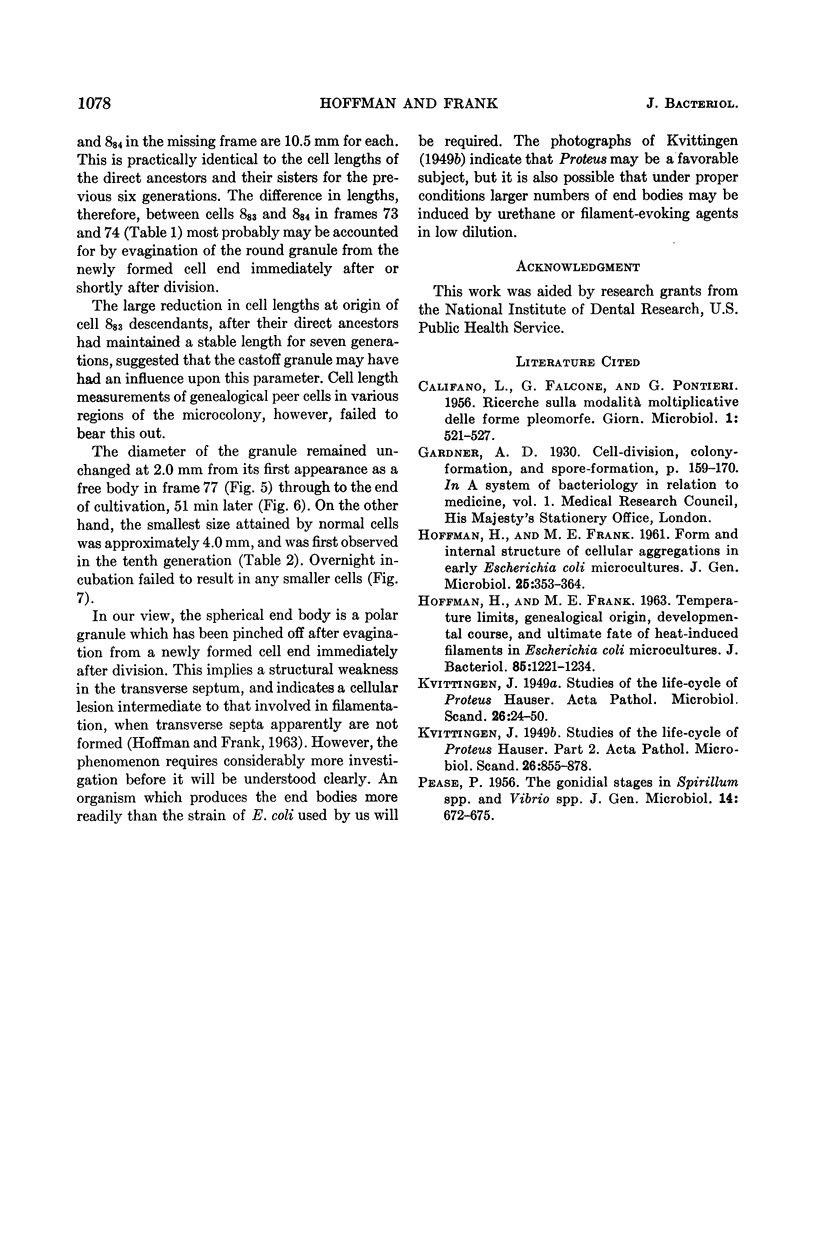
Images in this article
Selected References
These references are in PubMed. This may not be the complete list of references from this article.
- HOFFMAN H., FRANK M. E. Form and internal structure of cellular aggregations in early Escherichia coli microcultures. J Gen Microbiol. 1961 Jul;25:353–364. doi: 10.1099/00221287-25-3-353. [DOI] [PubMed] [Google Scholar]
- HOFFMAN H., FRANK M. E. TEMPERATURE LIMITS, GENEALOGICAL ORIGIN, DEVELOPMENTAL COURSE, AND ULTIMATE FATE OF HEAT-INDUCED FILAMENTS IN ESCHERICHIA COLI MICROCULTURES. J Bacteriol. 1963 Jun;85:1221–1234. doi: 10.1128/jb.85.6.1221-1234.1963. [DOI] [PMC free article] [PubMed] [Google Scholar]
- PEASE P. The gonidial stages in Spirillum spp. and Vibrio spp. J Gen Microbiol. 1956 Jul;14(3):672–675. doi: 10.1099/00221287-14-3-672. [DOI] [PubMed] [Google Scholar]



